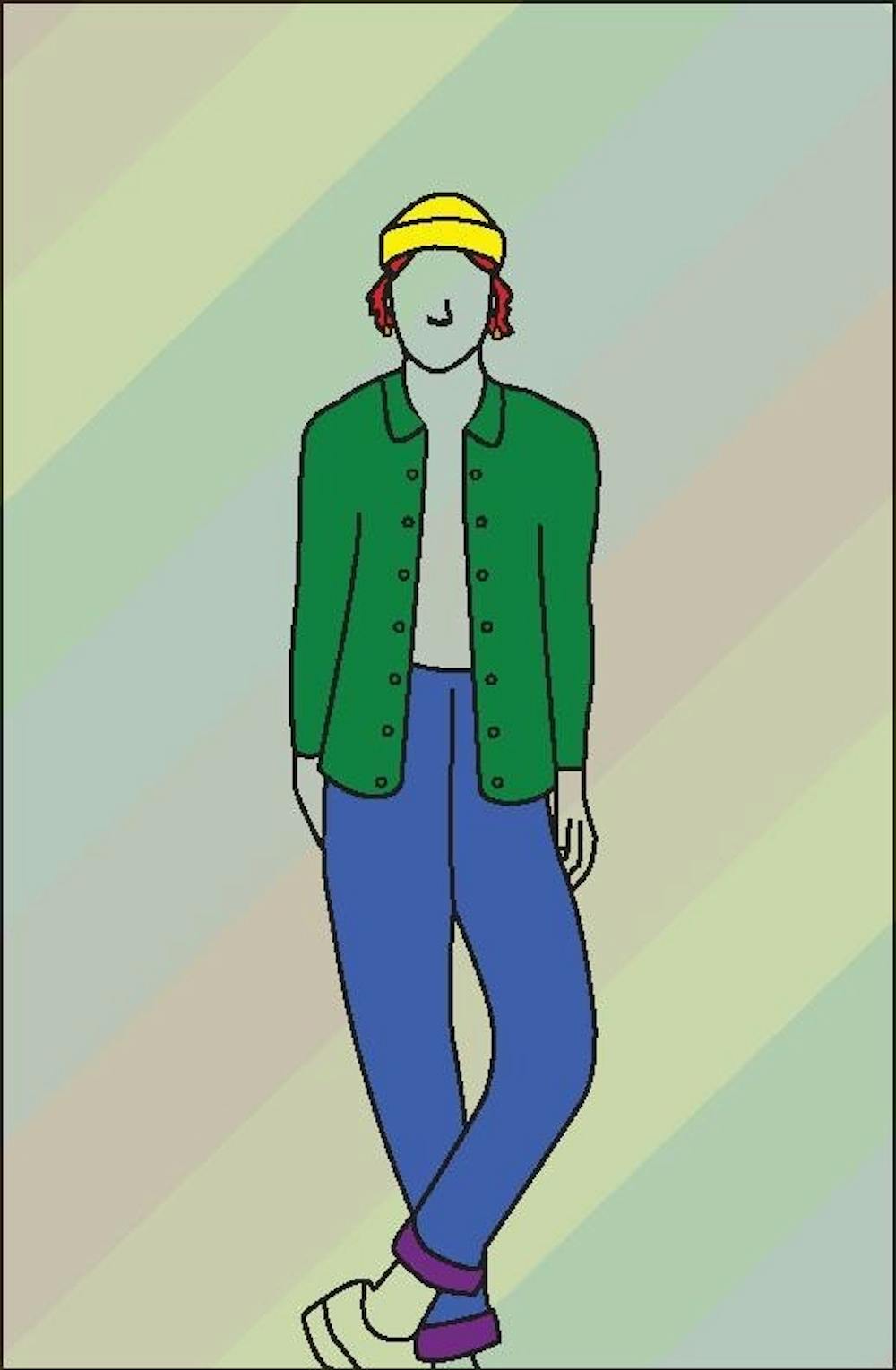When I first came out, the tell-tale signs of a bisexual person were tucked-in shirts, double denim and cuffing everything that they were wearing. Much of this remains — except it’s been expanded beyond the first bisexual people I met. Queer communities often cut ahead of the curve and end up defining fashion for Gen-Z & Millennial audiences, regardless of sexual orientation. Consider figures like Yves Saint Laurent and Christian Dior who defined modern menswear via their titular brands.
In a more modern context, it’s not uncommon to see big earrings or a nose piercing on someone who is vocally not queer these days. The fashion of a “crunchy granola girl” (a style now applied across the gender spectrum) involves wearing the flannels & beanies more traditionally associated with queer women. So what gives? Is that guy queer or just enjoys long, dangly earrings? (Side note: It’s making my dating life harder.) As one of my friends puts it–why do straight people keep dressing gay? And what does it mean to “dress gay” in the first place?
Some context is necessary. We live in some of the most open times for LGBTQ+ identities (in the United States, at least), even with the onslaught of legislation veering in an alternative direction. More people can publicly claim queer identities in mixed settings of queer and non-queer people. Many people don’t or can’t “come out,” however, and want to limit discussions of their LGBTQ+ identity to … other LGBTQ+ people.
But there is no universal marker of LGBTQ+ people.
This is a moment where I’d normally crack a joke about certain music tastes or a type of flannel being a “dead giveaway” for someone being queer — but those things too began as intentional safe “signals” for other queer people.
Queer fashion exists as not only a communication mechanism but a safety one, ensuring members of the community can spot one another more easily. “Dressing gay” is to define oneself as “in” this group, even subtly, in order to indicate to other group members that they should feel secure (as much as they can).
A quick review of Google’s dictionary defines signaling as the act to “transmit information or instructions by means of a gesture, action, or sound.” Queer identity, particularly sexual orientation, is sometimes referred to as a “latent” or “hidden” identity — something that can marginalize a person but isn’t necessarily detectable on sight. (Some queer people — particularly transgender and nonbinary people — don’t have this experience and are discriminated against for “looking” queer.)
To get past being in a community of “hidden identities,” queer people have devised system after system of communication. Before clothing, there were symbols like the Greek letter lambda (λ), first affiliated with the gay liberation movement. A particularly well-known symbol is “hankerchief code” or “hanky code,” involving bandanas worn in back pockets. Dozens of symbols have existed across the world and in the United States.
Queer communities with more proximity to privileged social identities found their signaling and activism) more documented; this shows especially with white cisgender gay men in the 1970s and onwards. While the AIDS/HIV epidemic started a “gay scare,” some LGBTQ+ people eventually found their way into rooms of power — and received a negative response from other queer people who were not having the same experience.
For more privileged classes of the community, the idea of signaling lies in the ability to go between “rebelling” against a system and returning to that system at will — i.e., switching between being overly queer and not.
Despite that, young queer people and even homophobes are constantly seeking new ways to identify members of the LGBTQ+ community. Google “gay fashion” and articles like “How to Dress Like a Bisexual” will pop up everywhere. Things like jorts, dad shirts, mesh crop tops and novelty sunglasses are inexplicably defined as “effortlessly gay” without substance as to what that means. Even so, I can tell with clarity that if I see a man in a sweater vest with no shirt under, several rings and a pearl necklace, I will probably assume he’s queer, even though nothing about that description actually tells me he is. Regardless, it’s likely to make me feel safer because of what they are wearing. But none of that answers the last question: why are straight people “dressing gay?”
Enjoy what you're reading?
Signup for our newsletter
There are a lot of queer and non-queer people seeking to answer the question. Some suggest we’re in the era of a fashion “melting pot,” and by the look of who’s getting septum piercings, I can see that. But I have to disagree.
Like other marginalized groups, queer communities tend to define what will enter the mainstream before it does. In an era where people are playing with gender norms now more than ever, the traditional modes of communicating queerness suddenly becomes less identifiable. The average male TikTok influencer in a sweater vest, rings and pearls is probably straight, not queer.
But these fashion statements often take inspiration from queer subcultures: ballroom, anarcho-punk and even prep’s revival are queer in origin. Playing with gendered assumptions is how fashion influencers are staying ahead of the curve, and so the result is that a gay & straight fashion choice seem almost indistinguishable — with meanings that are fundamentally different.




